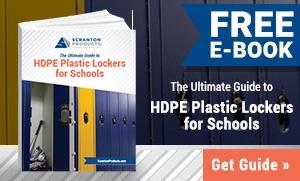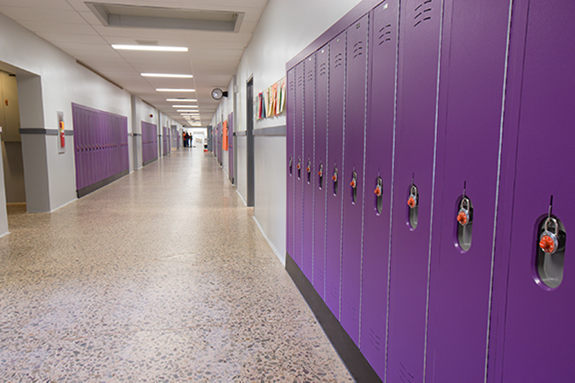HDPE vs. Metal: Which Material Comes Out on Top?
When you’re searching for products for your facility, one of the most important factors to consider is material. The material of your products makes all the difference when it comes to durability, sustainability and aesthetics. You also want to make sure that you’re purchasing materials that will hold up over time Some popular materials include high density polyethylene (HDPE) and metal. If you’re torn between the two or you’re just looking for more information, keep reading to find out which material is the better option based on what matters most to you.
Pleasing Aesthetics
You want to make sure that the products in your facility add to your building, or blend in, rather than standing out and looking unsightly. Traditional metal lockers have vents and handles that protrude from the surface, which is not aesthetically pleasing. These protruding elements may also lead to bumps and scrapes and reduce safety in the facility. HDPE plastic lockers have vents built into the surface with recessed handles and locks for a smooth, clean look. The recessed handles and locks help to improve safety by eliminating the risk of bumps and scrapes.
Damage Resistant
Overall, HDPE plastic holds up better than metal against damages such as impacts, scratches and even graffiti.
- Impact: Traditional lockers are made from 16 gauge steel which makes the material less than 1/16 of an inch thick. HDPE plastic lockers are made of rigid 1/2 inch thick rigid HDPE plastic which makes them 59 times stronger, which means that plastic lockers are more resistant to impacts and dents than traditional metal lockers.
- Scratches: Scratches are also commonly seen on metal lockers which expose the metal underneath the paint. This requires paint to cover up or complete replacement. However, HDPE plastic lockers are one solid color throughout. You won’t have to spend time and money covering scratches or chips in the paint.
- Graffiti: If you have to deal with graffiti in your facility, you’ll want to choose a material that can easily be cleaned. Markers can be very difficult to remove from metal lockers, and could even leave behind residue, but because HDPE is easy to clean, graffiti readily wipes off of the plastic’s non-porous surface. Stickers and contact paper can also be easily removed.
Maintenance

Choosing locker materials that constantly need to be repaired, replaced or cleaned gets costly. While budget is always an important factor in choosing materials, it’s crucial to understand that products that are the least expensive initially could end up costing you in the future. Traditional metal lockers have a low initial cost, making them a top choice for facilities. However, additional expenses for these lockers, such as cleaning, painting and general maintenance will add up. The initial cost of metal lockers is lower than HDPE plastic, but HDPE plastic is less expensive over time. If you’re considering installing lockers or bathroom partitions into your facility, consider HDPE plastic over metal lockers for durable and sustainable products. Click here to find out where to buy Scranton Products.



